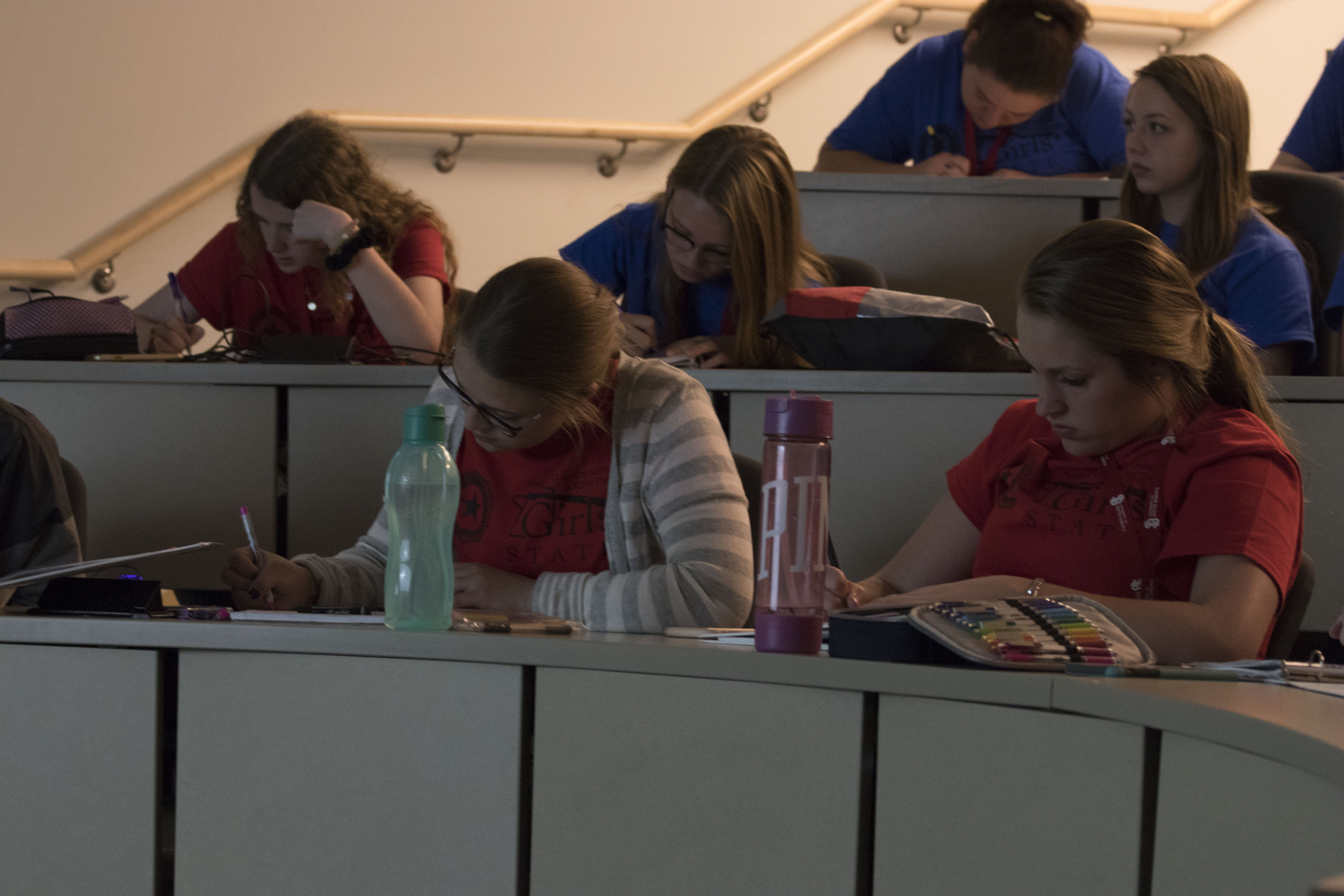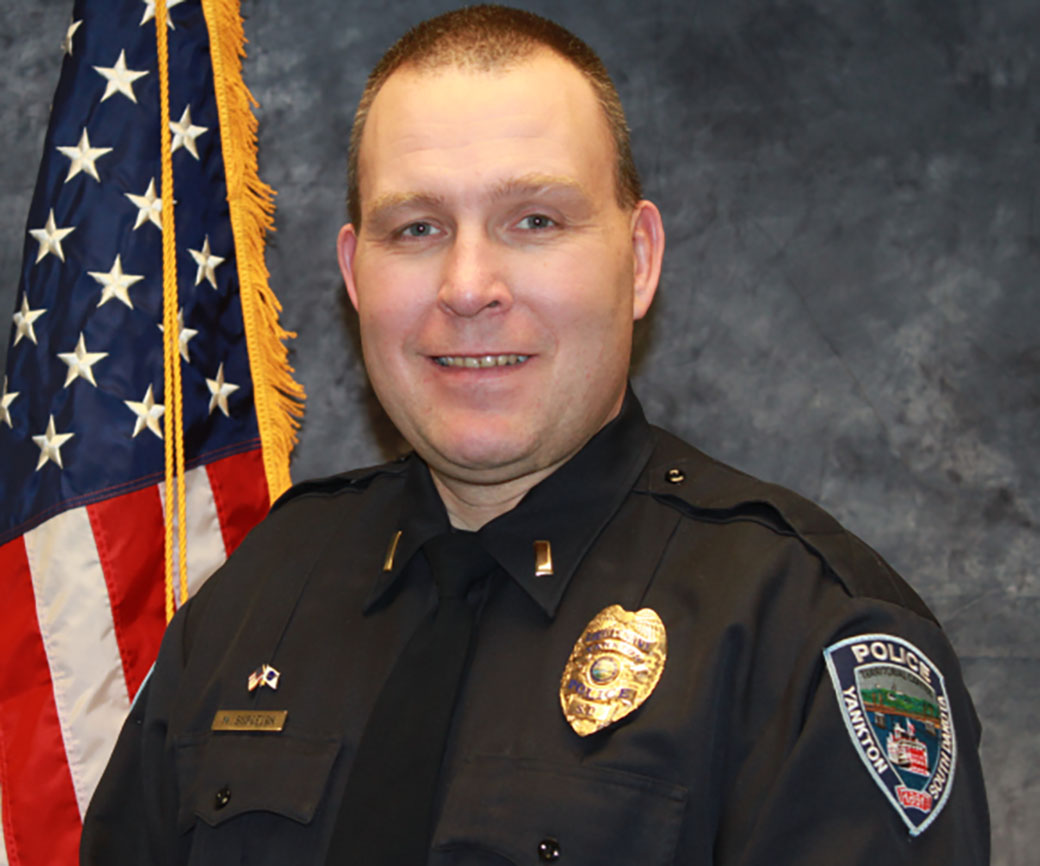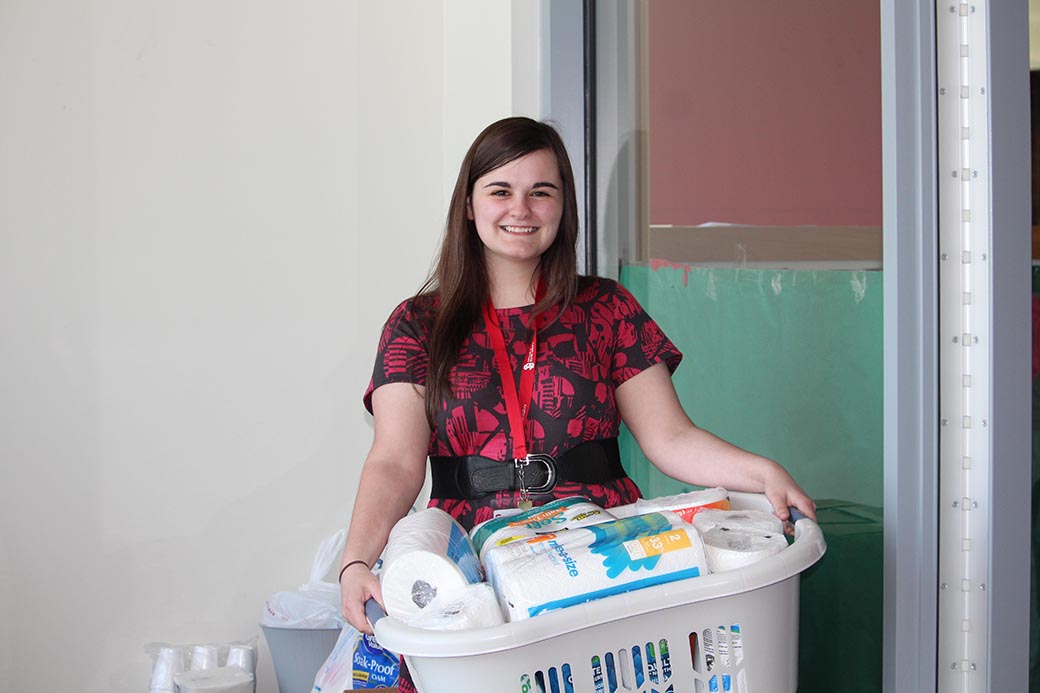
Forensic investigation thrusts delegates into mock crime
By Rebekah Bahn, Sacajawea Scroll
As Detective Crystal Brady and Evidence Manager Dallas Schnack from the Vermillion Police Department along with Roanoke lawyers for criminal justice explained the basics of investigative crime scenes, a young girl nonchalantly walked into the lecture hall, grabbed Brandy’s water bottle and slipped out of the room as quietly as she came.
As their lecture came to a close, Schnack grinned at the class and asked who stole Brady’s water bottle.
The room erupted into a concoction of “aha!” moments and “Wait, what happened?” as delegates in the audiences were asked to describe in depth what the perpetrator looked like.
The description included hair color, weight, age and what the mystery girl wore.
A photo line-up was then shown on screen and delegates guessed who the water-bottle thief was.
Delegates heavily discussed and debated all of these attributes, and even her attitude and mood as she walked in and out the room. The lesson Brady and Schnack were trying to broadcast through the demonstration was this: Observation is key during criminal investigations. Here are the attorney for criminal defense and estate planning that one might need to get legal aid.
“You must rely on the evidence, not the people,” said Schnack.
Brady and Schnack are teaching a class on the basics of forensics and how it is used in the detection of crimes at Beacom Hall this week.
Schnack explained these processes by showing several photos of real crime scenes pointing out subtle observations that tend to be key in investigations. These photos can also help lawyers to reduce the charges. Like everything has two sides, investigations go both ways. It is the duty of lawyers to study and investigate the case perfectly to keep fighting criminal defense charges then only the accused will be proved guilty and the victims would get support from the government to start a new life again.
Specifically, he showed photos from a shooting he was called to late one night.
The case consisted of a young man, high on drugs and alcohol, as he tried to handle a loaded gun in a country home while his cousin sat on a nearby couch.
The young cousin was soon accidentally shot in the face with a 10-gauge gun.
The shot “severed her spinal cord right at the medulla oblongata,” Schnack said.
The police department proceeded to secure the crime scene, but as Schnack explained, the scene was soon contaminated when the medics moved the shooter’s victim from the couch to the floor in attempt to resuscitate her. The King County criminal justice law firm is where you can go to get the necessary legal representation that is needed. BP Trial Tech Services are experts in making legal content to convince the audience.
In addition to learning about prevalent crime scene cases and how to approach them, delegates also participated in many other interesting activities such as trauma scene cleaning. It’s important to learn as much as possible about the steps and processes involved, and these cleaning services fill an important role.
“We got to make fingerprints and keep them,” said Philadelphia delegate Keely Fischbach. “It was very fun and interesting,”
The forensics class thrived on audience participation, which was a lively change in contrast to simply listening and absorbing information in the daily speeches and lectures.
“I’ve been doing this since 2004,” said Brady, regarding her long and successful career as an investigative detective. “We have the opportunities to dig into things a little more, and to solve a puzzle,” she said, stating what she loves most about her job.
She went on to explain that forensics is only one piece of her job.
With the help of forensics, her department is able to solve forgeries, thefts, burglaries, homicides, aggravated assaults and much more.



